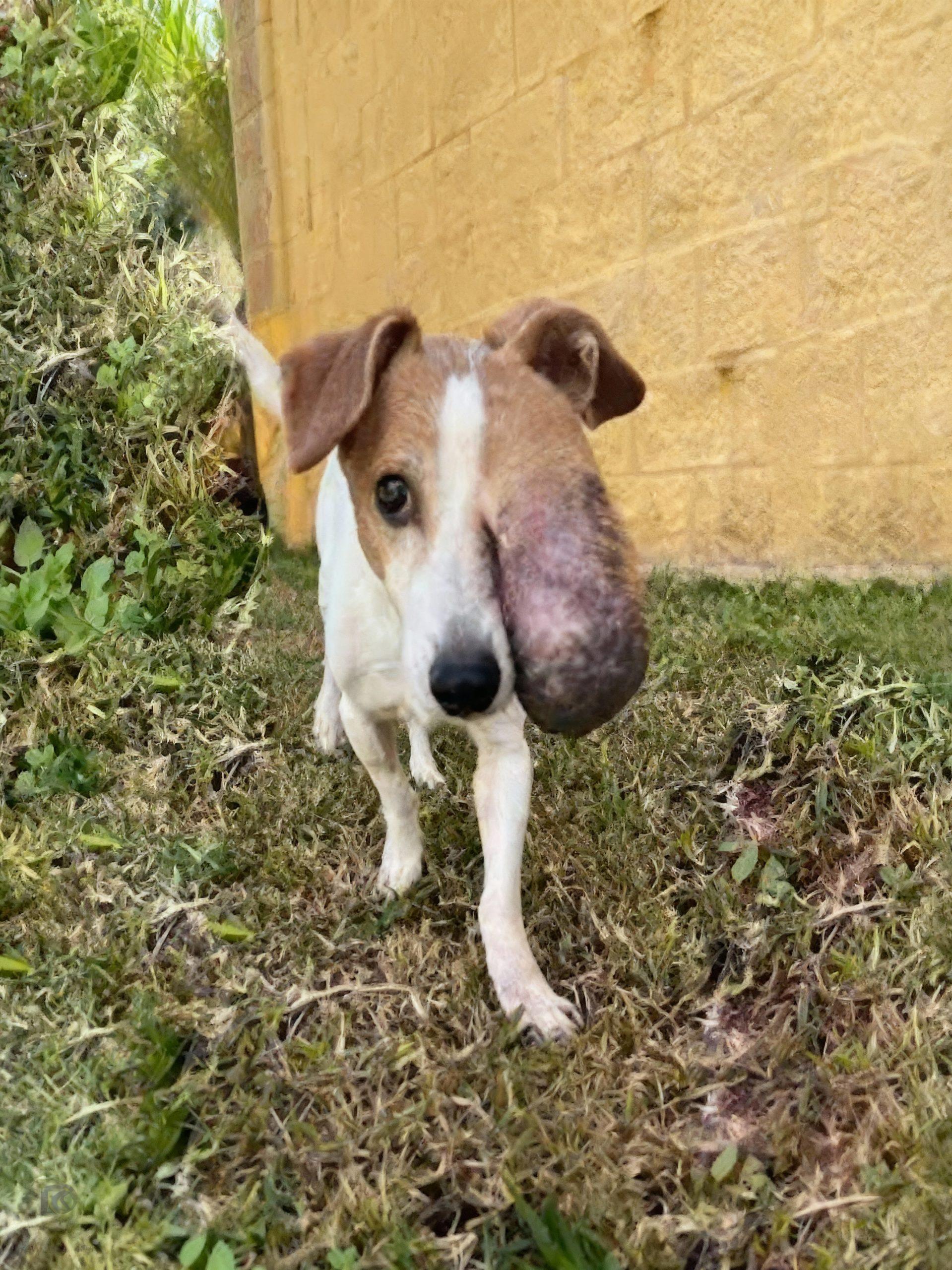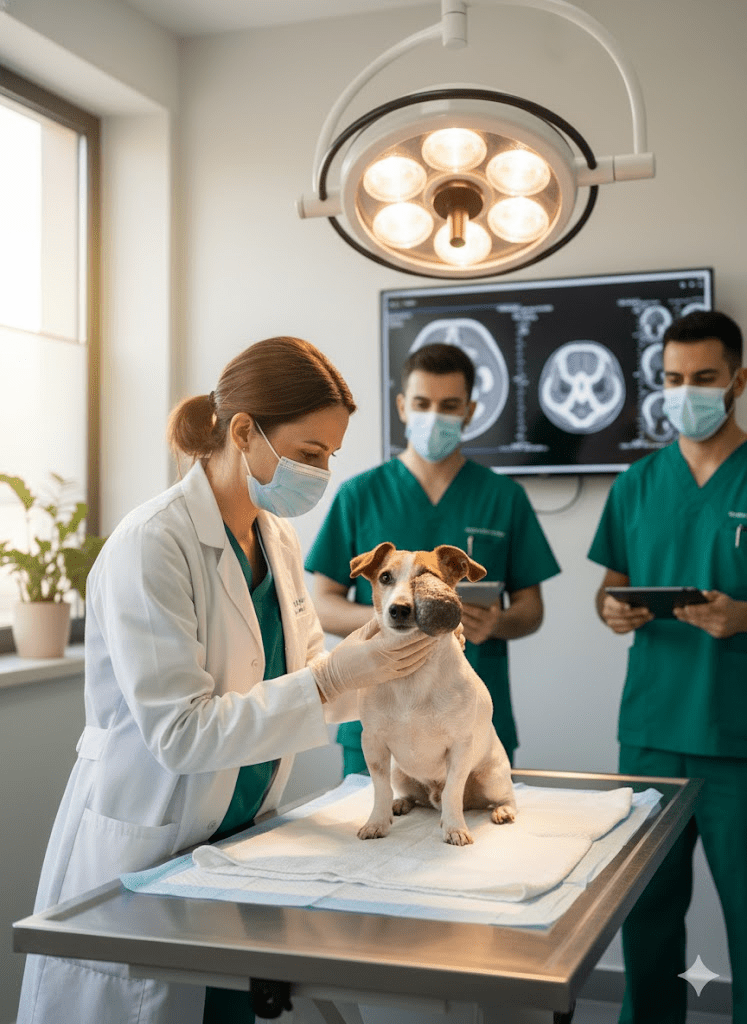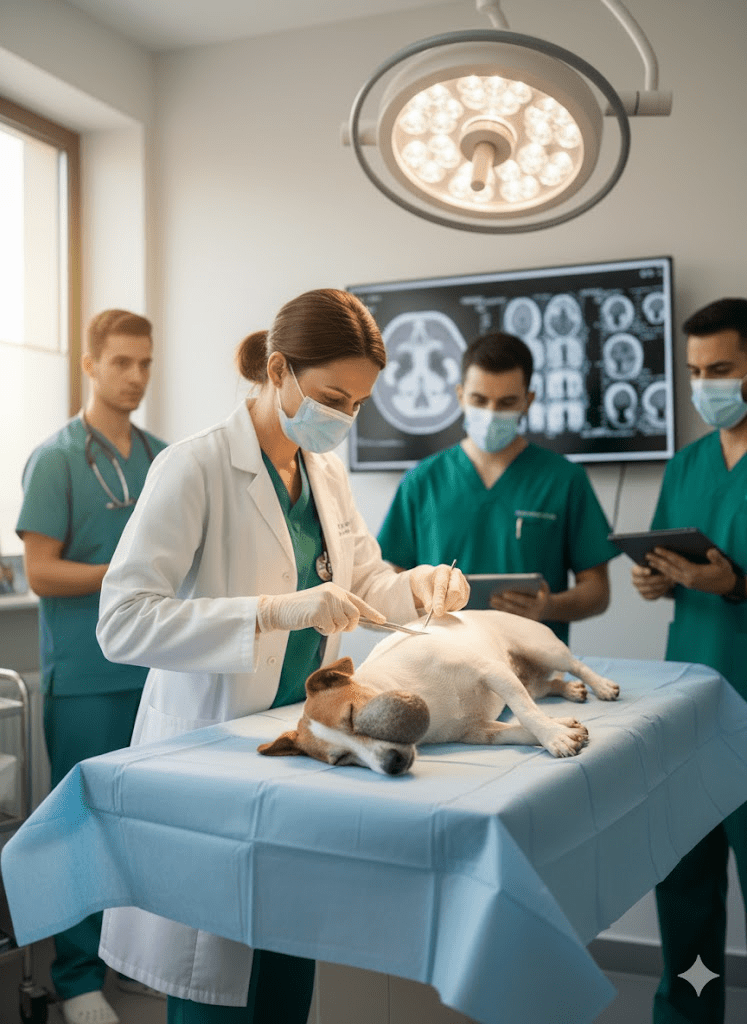The image of this brave dog, with a prominent facial growth, is a stark reminder of the challenges many animals face. While the sight can be distressing, it also underscores a critical area of veterinary medicine: the diagnosis and treatment of facial tumors in canines. These growths, which can vary widely in type, severity, and prognosis, demand prompt attention and a compassionate, informed approach. Understanding the different kinds of tumors, the diagnostic processes involved, and the available treatment options is crucial for both veterinarians and pet owners. This article aims to shed light on this complex issue, offering insights into how these conditions are managed and the hope that can be found in advanced veterinary care. From initial detection to post-treatment recovery, every step is vital in ensuring the best possible outcome for our beloved companions.

Recognizing the Signs and Initial Assessment
Detecting a facial tumor in a dog often begins with careful observation by the owner. While some growths are immediately obvious, like the one pictured, others may start as subtle swellings, skin discolorations, or changes in behavior. Pet owners might notice their dog pawing at their face, showing discomfort while eating, or experiencing difficulty breathing if the tumor is impacting nasal passages. Any new lump or unusual change on a dog’s face warrants a visit to the veterinarian. During the initial assessment, the vet will perform a thorough physical examination, palpating the growth to determine its size, consistency, and mobility. They will also assess the dog’s overall health, looking for any other signs of illness. This initial evaluation helps the veterinarian form a preliminary idea of the tumor’s nature and guides the subsequent diagnostic steps. Early detection significantly impacts prognosis, making owners’ vigilance critical.

Diagnostic Procedures: Uncovering the Truth
Once a tumor is identified, a series of diagnostic tests are performed to understand its precise nature. The goal is to determine if the tumor is benign (non-cancerous) or malignant (cancerous), and if malignant, to determine its type and stage. The most common diagnostic procedure is a fine needle aspirate (FNA), where a small sample of cells is collected from the tumor using a needle and then examined under a microscope by a veterinary pathologist. If the FNA is inconclusive or suggests malignancy, a biopsy may be recommended. A biopsy involves surgically removing a larger piece of the tumor for more comprehensive histopathological examination. In addition to tissue samples, imaging techniques like X-rays, CT scans, and MRI scans are often used to assess the tumor’s extent, its involvement with surrounding tissues and bone, and to check for metastasis (spread of cancer) to other parts of the body. Blood work and urinalysis also provide valuable information about the dog’s overall health and organ function, which is critical for planning treatment.

Tailored Treatment Approaches
Treatment plans for facial tumors are highly individualized, depending on the tumor type, size, location, stage, and the dog’s overall health. Surgical removal is often the primary treatment for both benign and malignant tumors, aiming to excise the growth entirely with clear margins. For facial tumors, surgery can be particularly challenging due to the delicate structures in the area, requiring precision and expertise to preserve function and aesthetics. In cases where complete surgical removal is not possible or if the tumor is aggressive, other therapies may be employed. Radiation therapy uses high-energy rays to shrink or destroy tumor cells, often used in conjunction with surgery or as a standalone treatment for inoperable tumors. Chemotherapy, involving anti-cancer drugs, is used for systemic cancers or when there’s a risk of metastasis. Newer treatments, such as targeted therapies and immunotherapy, are also emerging, offering promising options for specific tumor types. The decision on the best course of action is made collaboratively between the veterinary oncologist, surgeon, and the pet owner, considering the dog’s quality of life throughout the process.







